The Ancient History of Jerusalem Explained: A Journey Through Millennia
Introduction: Unveiling Jerusalem’s Timeless Legacy
The Enduring Significance of Jerusalem
Jerusalem stands as a testament to the enduring power of history, a city whose very stones whisper tales of ancient empires and spiritual devotion. It is, without doubt, a true crossroads of civilizations and religions, holding unparalleled significance for Judaism, Christianity, and Islam. This remarkable city is one of the world’s oldest continuously inhabited urban centers, boasting a rich and complex history that spans well over 5,000 years.
What Defines “Ancient History” for Jerusalem?
When we delve into the ancient history of Jerusalem explained, we typically refer to the period stretching from its earliest recorded settlements in the 4th millennium BCE right up to the dawn of the Islamic Golden Age, around the 7th century CE. Understanding this profound ancient past is absolutely crucial for comprehending the city’s present-day complexities, its unique cultural tapestry, and its ongoing global significance.
The Dawn of Civilization: Early Settlements and Canaanite Roots (c. 4500 – 1000 BCE)
Chalcolithic and Early Bronze Age Origins
The story of Jerusalem begins long before the grand narratives of kings and prophets. The first evidence of human habitation dates back to the Chalcolithic period, with early Jerusalem settlements emerging near the perennial Gihon Spring, a vital water source, around 4500-3500 BCE [1]. Archaeological excavations have unearthed compelling evidence of early communal life, including pottery and structures that paint a picture of nascent urban development in the Early Bronze Age.
The Canaanite City: Urusalim and Egyptian Influence
By the 2nd millennium BCE, Jerusalem had begun to appear in written records. The earliest known mentions come from Egyptian Execration Texts, where it is referred to as “Rusalimum” around 2000 BCE. Later, in the 14th century BCE, the city is famously named “Urusalim” in the Amarna Letters, a collection of diplomatic correspondence between Egyptian pharaohs and their Canaanite vassals [2]. By the 17th century BCE, it was a fortified Canaanite city, already featuring impressive water systems designed to protect its precious Gihon Spring. The inhabitants prior to the Israelite conquest were known as the Jebusites.
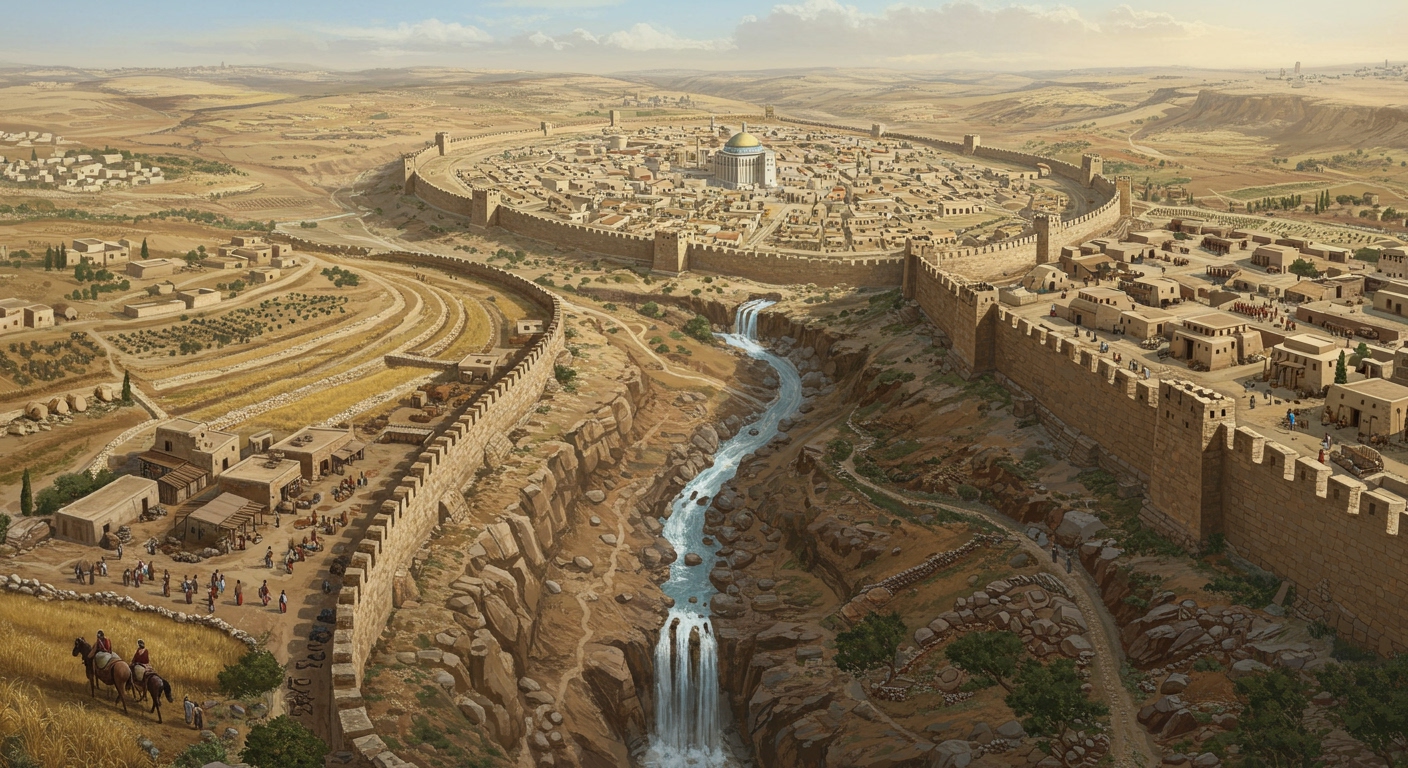
The Israelite Capital: Kingdom, Temples, and Exile (c. 1000 – 539 BCE)
King David and the Establishment of the Capital
A pivotal moment in the ancient history of Jerusalem explained arrived around 1000 BCE when King David Jerusalem conquered the city from the Jebusites. This strategic move transformed Jerusalem into the capital of the United Kingdom of Israel, a neutral territory that belonged to no single tribe, making it a unifying symbol for the burgeoning Israelite nation [3]. It became known as the “City of David,” laying the foundation for its enduring religious and political significance.
King Solomon and the First Temple
David’s son, King Solomon, further cemented Jerusalem’s status by constructing the magnificent First Temple on the Temple Mount around 962 BCE. This act established Jerusalem as the undisputed spiritual and religious center for the Israelites, housing the Ark of the Covenant and becoming the focal point of their worship. The Temple Mount’s early significance began with this monumental construction.
The Kingdom of Judah and Foreign Threats
Following the split of the monarchy around 931 BCE, Jerusalem remained the capital of the southern Kingdom of Judah. This period was marked by constant foreign threats. During the Assyrian Period, King Hezekiah initiated significant reforms and fortified the city. In 701 BCE, Jerusalem famously withstood a siege by the formidable Assyrian King Sennacherib, a testament to its defenses and divine protection. Hezekiah also oversaw the construction of the Siloam Tunnel, an engineering marvel that ensured water security for the city during sieges.
Babylonian Conquest and Exile
The prosperity and independence of Judah eventually succumbed to the rising power of Babylon. In 586 BCE, Nebuchadnezzar II captured Jerusalem, destroying the First Temple and razing much of the city [4]. This catastrophic event led to the Babylonian Exile, where a significant portion of the Jewish population was deported, marking a traumatic but formative chapter in their history.
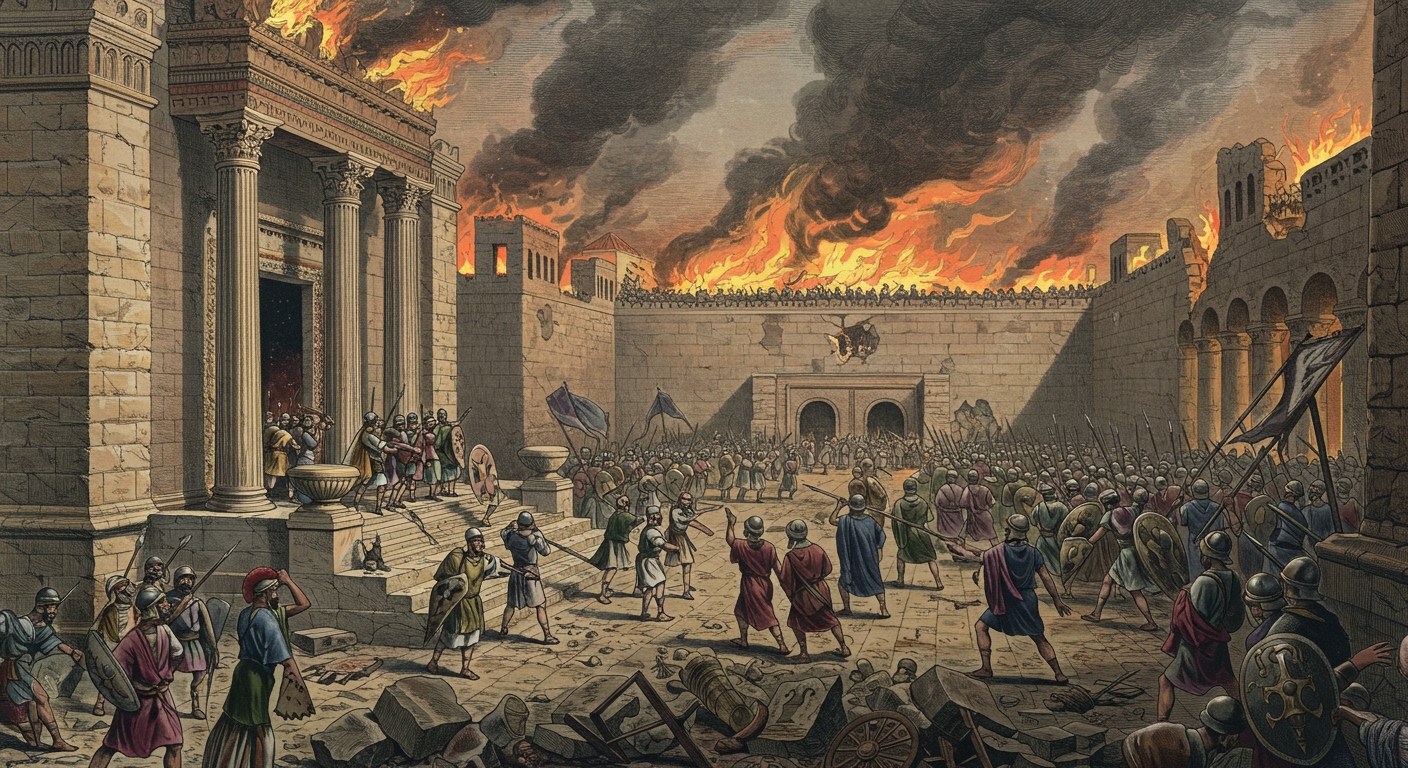
Rebirth Under Persian Rule and Hellenistic Influences (539 – 63 BCE)
The Return to Zion and the Second Temple
The tide turned with the rise of the Persian Empire. In 539 BCE, Cyrus the Great issued a decree allowing the Jews to return from exile and rebuild their Temple. This led to the construction of the Second Temple, completed in 516 BCE, which revitalized Jerusalem as a religious center. Later, around 445 BCE, Nehemiah spearheaded the crucial effort to rebuild Jerusalem’s protective walls, restoring a sense of security and identity to the community.
Alexander the Great and the Dawn of Hellenism
The conquest of Alexander the Great in 332 BCE ushered in an era of profound Hellenistic influence. Jerusalem, along with the rest of the region, came under Greek rule, first under the Ptolemies of Egypt and then the Seleucids of Syria. This period saw the gradual spread of Greek language, culture, and customs, significantly impacting Jewish society.
The Maccabean Revolt and Hasmonean Dynasty
The imposition of Hellenistic practices and religious persecution under Antiochus IV Epiphanes sparked the courageous Maccabean Revolt around 167-164 BCE. This heroic uprising led to the rededication of the Temple (commemorated by Hanukkah) and the eventual establishment of the independent Hasmonean Kingdom (141-37 BCE), a rare period of Jewish self-rule in the Jerusalem historical timeline.
Roman Domination and the Rise of Christianity (63 BCE – 324 CE)
Pompey’s Conquest and Herod the Great’s Era
The independence of the Hasmonean Kingdom was short-lived. In 63 BCE, the Roman General Pompey conquered Jerusalem, bringing the city under Roman domination. This marked the beginning of a long and often turbulent relationship with Rome. Herod the Great, a client-king of Rome, ruled from 37 BCE to 4 CE and embarked on an ambitious building program, most notably the massive expansion and beautification of the Second Temple, making it one of the largest and most magnificent sanctuaries in the ancient world. This era significantly shaped Roman Jerusalem.
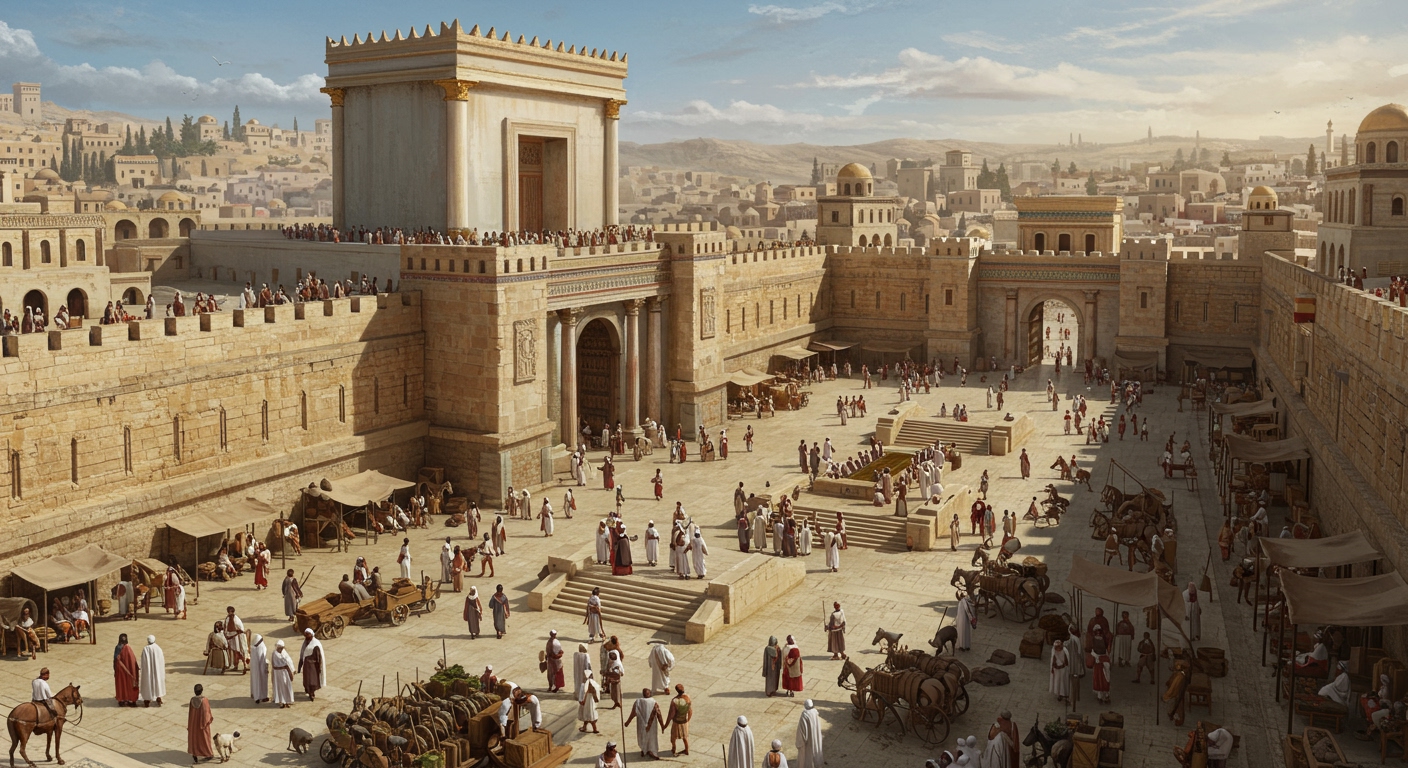
Jerusalem in the Time of Jesus
It was during this period of Roman rule and Herodian splendor that Jesus Christ lived and ministered. Jerusalem served as the backdrop for many key events in his life, including his teachings, the Last Supper, and ultimately, his crucifixion around 30 CE. These events profoundly transformed the city’s religious significance for billions worldwide.
The Jewish Revolts and the Destruction of the Second Temple
Tensions between the Jewish population and their Roman overlords eventually erupted into the First Jewish-Roman War (66-73 CE). This devastating conflict culminated in the Siege of Jerusalem and the tragic destruction of the Second Temple by Titus in 70 CE. The Arch of Titus in Rome stands today as a stark monument commemorating this conquest and the subjugation of Judea.
Aelia Capitolina and the Bar Kokhba Revolt
Following a second major uprising, the Bar Kokhba Revolt (132-136 CE), the Romans brutally suppressed the Jewish rebellion. Emperor Hadrian then rebuilt Jerusalem as a Roman colony named Aelia Capitolina, completely redesigning its layout. Jews were banned from entering the city, a decree that remained in force for centuries, fundamentally altering the demographic and religious landscape of Jerusalem.
The Byzantine Christian City (324 – 638 CE)
Constantine and the Christianization of Jerusalem
A new chapter in the ancient history of Jerusalem explained began with the conversion of Emperor Constantine to Christianity in the early 4th century. His endorsement of Christianity transformed Jerusalem into a paramount center for Christian pilgrimage. His mother, St. Helena, embarked on a famous pilgrimage, identifying holy sites and initiating the construction of key Christian shrines, most notably the magnificent Church of the Holy Sepulchre around 335 CE, believed to encompass the sites of Jesus’ crucifixion and resurrection [5].
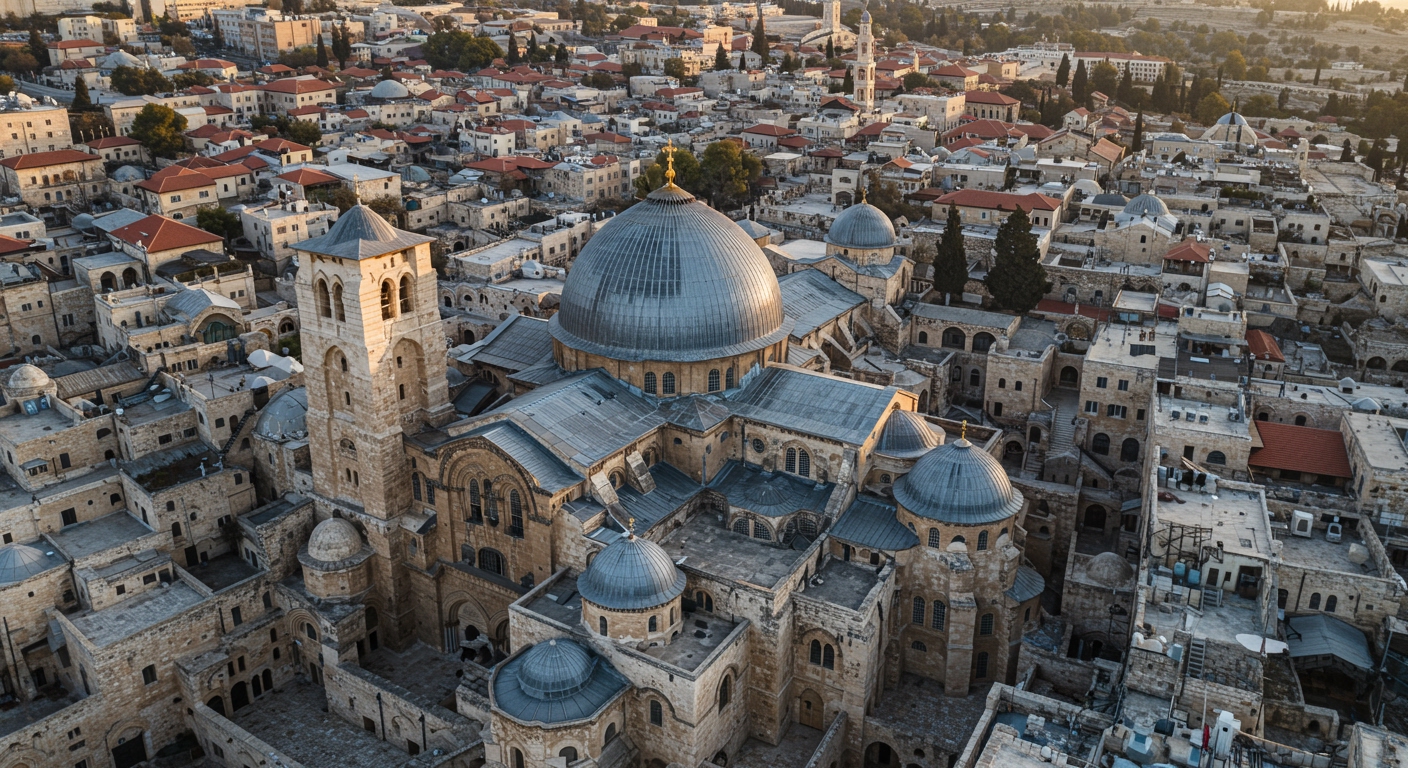
Jerusalem as a Center of Byzantine Christianity
Under emperors like Justinian I, Byzantine Jerusalem history saw a flourishing of churches, monasteries, and hospices, catering to the ever-increasing stream of pilgrims. The city solidified its position as a spiritual beacon for early Christianity, drawing devotees from across the vast Byzantine Empire and beyond.
Persian Interlude and Byzantine Reassertion
The Byzantine era was briefly interrupted by the Persian conquest of Jerusalem in 614 CE, a period of significant destruction and persecution for the Christian population. However, the Byzantine Christians, under Emperor Heraclius, recaptured Jerusalem in 629 CE, reasserting imperial control and restoring the holy sites.
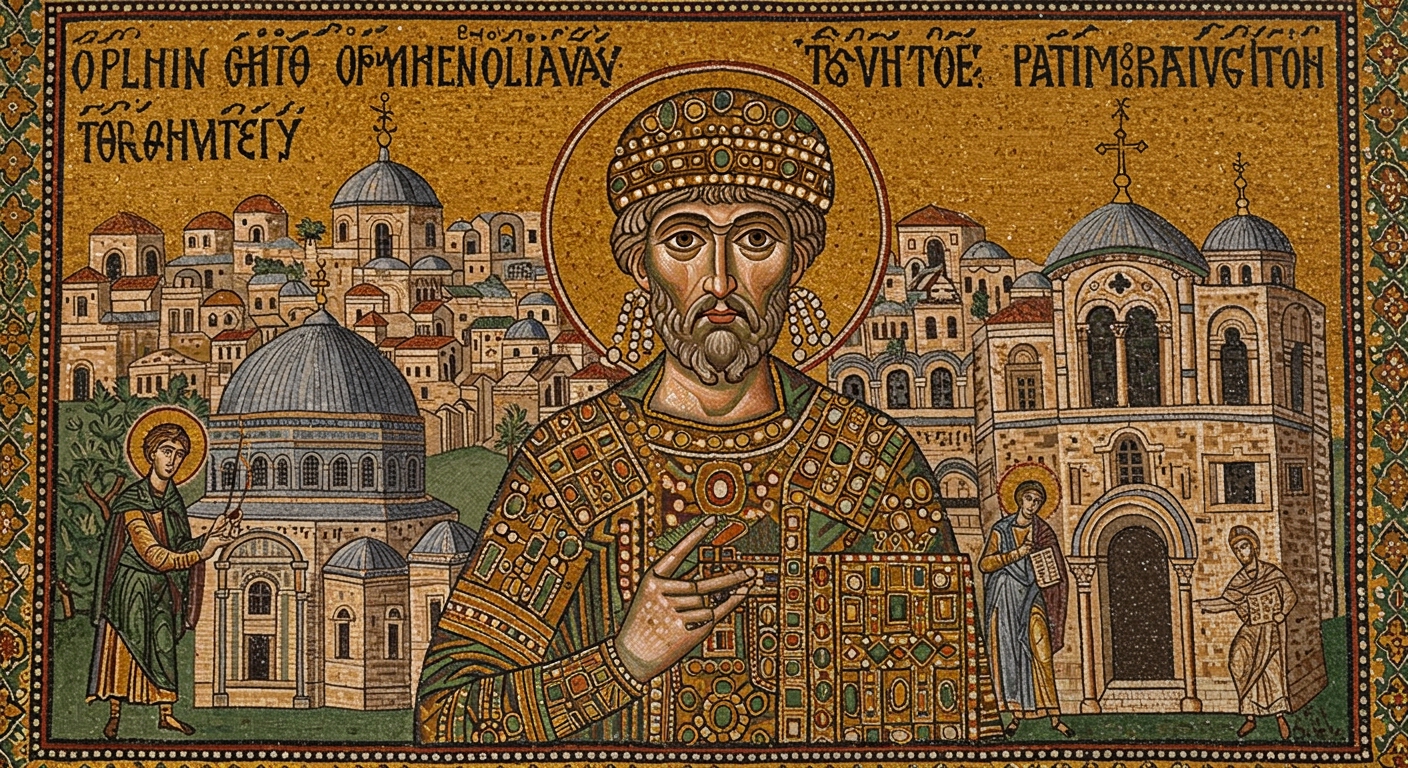
Conclusion: The Enduring Legacy of Ancient Jerusalem
A Tapestry of Civilizations and Faiths
The ancient history of Jerusalem explained reveals a city unlike any other, a remarkable tapestry woven from the threads of countless civilizations, empires, and faiths. From its humble Chalcolithic origins to its transformation under Israelite kings, Persian decrees, Hellenistic influences, Roman might, and Byzantine piety, Jerusalem has played a pivotal role in shaping human history and religious developments. The foundations laid in its ancient past continue to define its ongoing global significance, making it a place of profound spiritual and cultural importance for billions worldwide.
Continuing Relevance and Modern Understanding
Even today, archaeological discoveries continually unearth new layers of Jerusalem’s past, offering fresh insights into its complex story. Exploring this ancient and holy city, whether through scholarly study or physical pilgrimage, remains an unparalleled journey into the heart of human civilization and faith. The Jerusalem historical timeline is far from complete, as its legacy continues to evolve and inspire.



